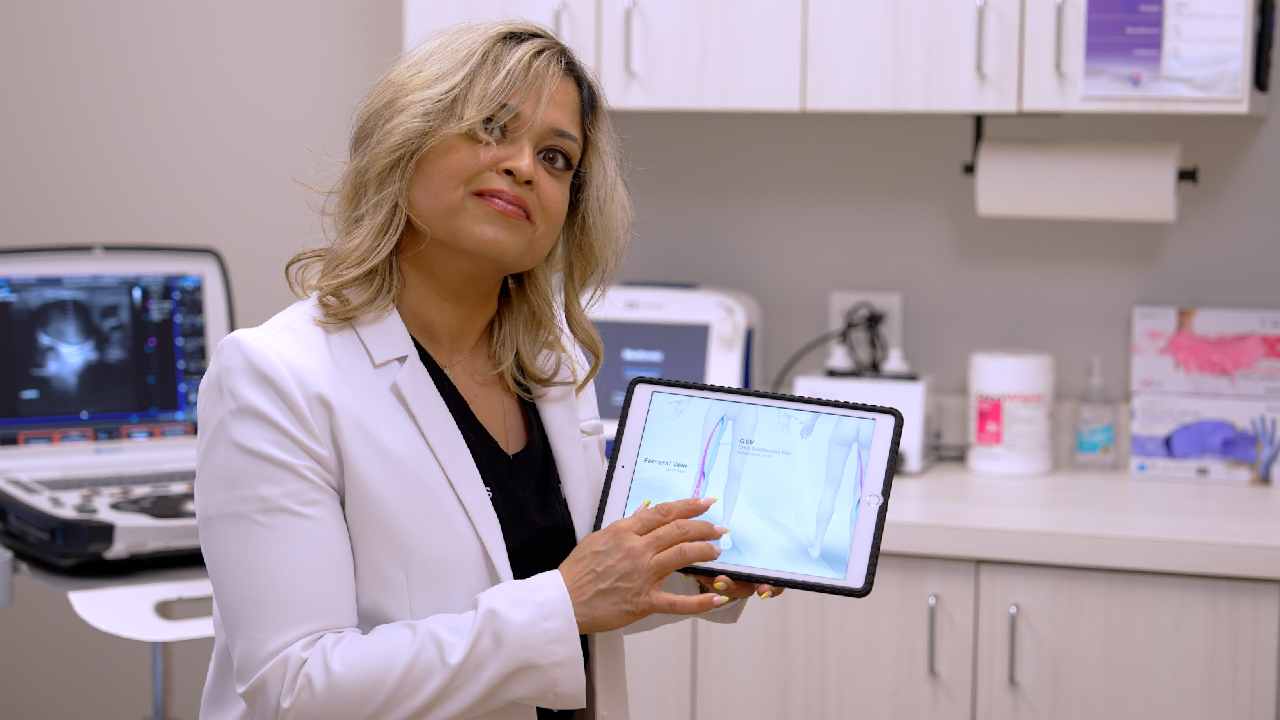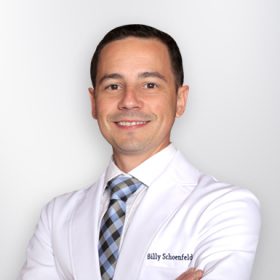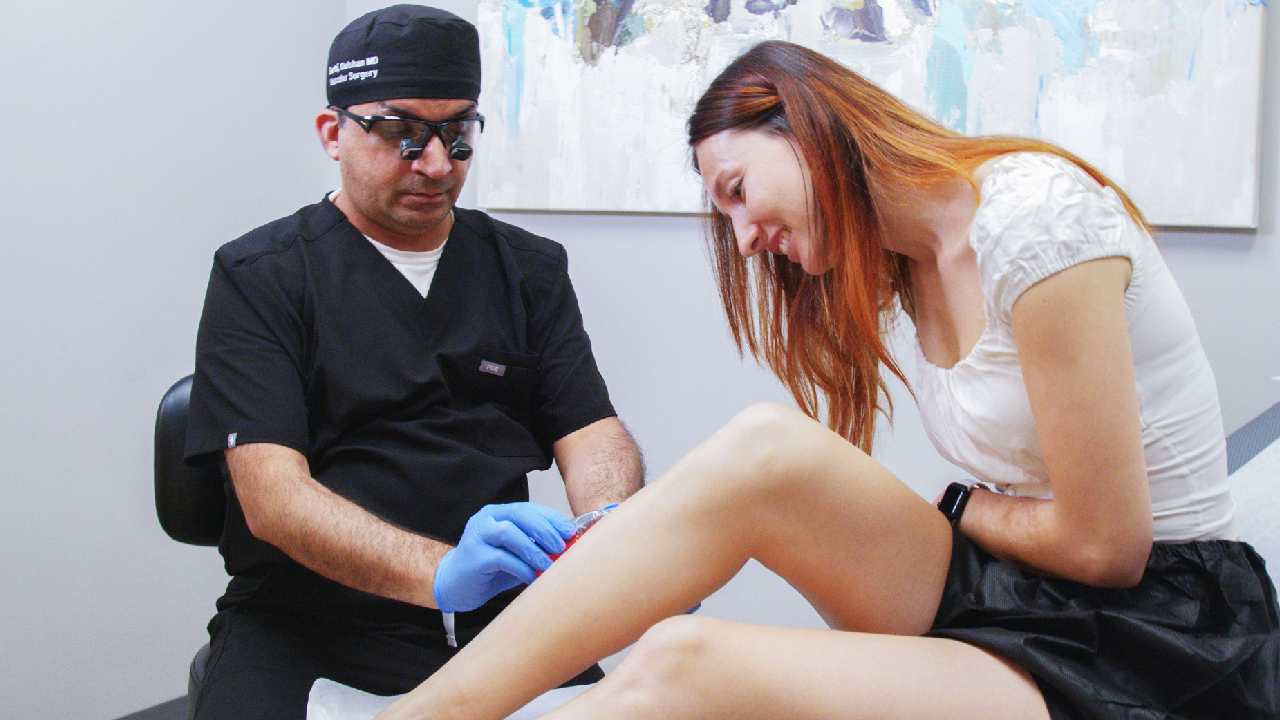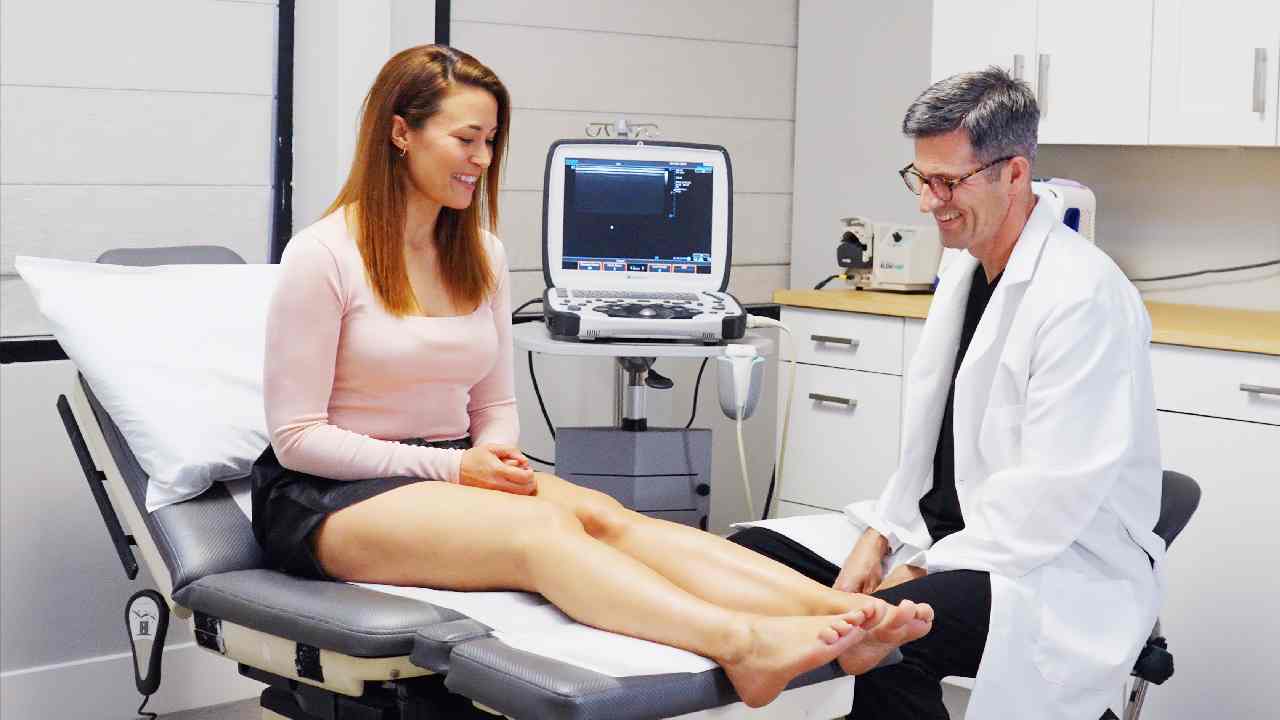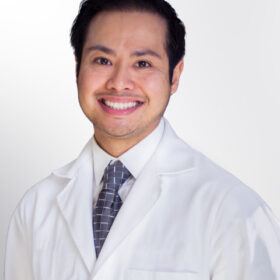
How to Reverse Varicose Veins? Is It Possible?
If you’re dealing with varicose veins, you’re probably wondering whether there’s a way to reverse them completely. While many people hope that varicose veins can be healed through simple, at-home remedies, the reality is that varicose veins cannot be fully reversed. These enlarged, twisted veins are a result of weakened valves in your blood vessels, which allows blood to pool in your legs, causing them to bulge out. Once varicose veins have developed, they cannot be cured by lifestyle changes alone.
However, this doesn’t mean you’re without options. There are effective treatments available to manage varicose veins and minimize further damage. At Vein Treatment Clinic, we specialize in minimally invasive varicose vein treatments that alleviate discomfort, improve the appearance of your legs, and prevent the condition from worsening. Keep reading to learn more about how to treat varicose veins, the treatments available, and lifestyle changes that can help.
Are you interested in getting more information about your condition or getting a treatment?
Fill the form below to start!
How to Reverse Varicose Veins?
Unfortunately, there’s no “miracle cure” to reverse varicose veins, and there’s no such thing as a spider veins treatment at home. However, you can take certain actions to prevent them from getting worse and reduce the likelihood of developing new varicose veins. Here are a few tips to help manage your varicose veins.
1. Maintain a Healthy Weight
Maintaining a healthy weight can relieve unnecessary pressure on your veins and prevent the condition from worsening. Excess weight, especially around the abdomen, can strain your legs and increase the risk of developing varicose veins. By staying at a healthy weight, you’re supporting your vascular health and reducing the likelihood of new veins forming.
Regular exercise, such as walking, swimming, or cycling, can also help control weight and improve circulation in the legs. These activities stimulate the calf muscles, which help pump blood into the veins and up toward the heart. If you’re concerned about your weight, consider consulting a healthcare provider for advice on diet and exercise.
2. Elevate Your Legs Regularly
One simple way to manage varicose veins is by elevating your legs above your heart whenever possible. This position helps gravity assist with blood flow back to the heart, relieving pressure on your veins. Elevating your legs can also reduce swelling and improve circulation, providing relief from the discomfort caused by varicose veins.
Take breaks during the day to elevate your legs for 15 to 20 minutes. You can do this while lying down, propping your legs on pillows, or using a reclining chair. Elevating your legs at night can help prevent further swelling that typically occurs after a long day of standing or sitting.
3. Avoid Long Periods of Standing or Sitting
If your lifestyle or job requires you to stand or sit for extended periods, try to move around regularly to reduce pressure on your veins. Standing or sitting for too long can restrict blood flow, contributing to the development of varicose veins. If you must remain stationary, shift your weight frequently or take short walking breaks every 30 minutes to keep blood circulating.
Simple leg exercises, such as calf raises or foot pumps, can also improve circulation and reduce the risk of blood pooling in your veins. These activities can be done easily at your desk or workstation, even during your busiest days.
4. Wear Compression Stockings
Compression stockings are specially designed to apply gentle pressure to your legs, promoting blood flow and helping to prevent blood from pooling in your veins. They come in various levels, from mild to firm, and can be purchased at most pharmacies. However, for optimal results, consult a vein doctor near you for custom compression stockings.
Compression stockings are particularly helpful for individuals with varicose veins or those at risk of developing them. By wearing compression stockings regularly, you can reduce discomfort, prevent new varicose veins, and even improve the appearance of existing veins. They can be worn throughout the day and are especially effective if you plan to be on your feet all day.
5. Stay Active and Exercise Regularly
Regular exercise is one of the most effective ways to improve circulation and manage varicose veins. Activities that engage your leg muscles, such as walking, swimming, or cycling, are particularly beneficial. These exercises help strengthen your leg muscles, improve blood flow, and reduce the strain on your veins.
Exercise also helps with weight management, which in turn supports vein health. Aim for at least 30 minutes of moderate exercise five days a week to keep your veins healthy.
How to Treat Spider Veins and Varicose Veins
While lifestyle changes can help manage the symptoms of varicose veins, the only way to treat the condition effectively is through a minimally invasive varicose veins medical procedure. Fortunately, there are several leg vein treatment options available that can improve the appearance of your legs and relieve discomfort. Let’s explore the various options.
1. Sclerotherapy
Sclerotherapy is one of the most common and effective treatments for small varicose veins and spider veins. During this spider vein removal, a solution is injected into the affected veins, causing them to collapse and eventually fade away. This minimally invasive treatment requires no downtime, making it a popular choice for those seeking a quick solution. Sclerotherapy is often used to treat smaller varicose veins and spider veins.
2. Endovenous Laser Ablation (EVLA)
Endovenous Laser Ablation (EVLA) is a popular varicose vein removal treatment that uses laser energy to seal off damaged veins. This procedure is minimally invasive and performed under local anesthesia. The laser heats and destroys the affected vein from the inside, causing it to close up and eventually be absorbed by the body. EVLA is ideal for larger varicose veins and offers minimal discomfort, fast recovery, and long-lasting results.
3. Radiofrequency Ablation (RFA)
Radiofrequency Ablation (RFA) is another minimally invasive treatment that uses heat to close off damaged veins. It is similar to EVLA but uses radiofrequency energy instead of lasers. RFA is highly effective in treating varicose veins and is performed similarly to EVLA. It is a quick treatment with minimal downtime, and it’s often used when patients have large varicose veins that need treatment. It’s one of the most common options for varicose vein removal.
4. VenaSeal
VenaSeal is a groundbreaking treatment that uses a medical adhesive to seal off problematic veins. A small catheter is inserted into the vein, and the adhesive is applied to close the vein and prevent blood from flowing through it. Over time, the body absorbs the closed vein, improving circulation and reducing symptoms. VenaSeal is ideal for patients who prefer a treatment with minimal downtime and less post-treatment discomfort.
5. Ambulatory Phlebectomy
Ambulatory Phlebectomy is a minimally invasive treatment used to remove larger varicose veins. Small incisions are made in the skin, and the veins are carefully extracted. This treatment is usually performed under local anesthesia and is ideal for veins that are too large for non-surgical treatments like sclerotherapy. Ambulatory Phlebectomy is effective in treating larger varicose veins, and it offers excellent cosmetic results.
FAQs
1. How to reverse varicose veins naturally?
Unfortunately, varicose veins cannot be fully reversed naturally. While lifestyle changes such as maintaining a healthy weight, elevating your legs, and wearing compression stockings can help prevent varicose veins from worsening, medical treatments are necessary for full treatment.
2. Can venous insufficiency be reversed?
Venous insufficiency, the underlying cause of varicose veins, cannot be reversed. However, medical treatments like sclerotherapy, endovenous laser ablation, and radiofrequency ablation can effectively manage the condition and prevent further complications.
3. What is the best treatment for varicose veins?
The best treatment for varicose veins depends on the severity and size of the veins. Minimally invasive procedures such as sclerotherapy, EVLA, RFA, VenaSeal, and ambulatory phlebectomy are highly effective for treating varicose veins and are customized to fit the patient’s needs.
4. How to treat spider veins?
Spider veins are often treated with sclerotherapy, often considered the best treatment for spider veins, in which a solution is injected into the veins to collapse them. However, sclerotherapy can only treat the spider veins and not the underlying vein disease. Sclerotherapy is often performed after procedures like EVLA, RFA, and ClariVein for comprehensive results.
5. Where can I find varicose veins treatment near me?
Where can I find varicose veins treatment near me? Vein Treatment Clinic has locations across New York, Long Island, California, Maryland, and New Jersey. Contact us to schedule a consultation and learn more about the best varicose veins treatments.
If you’re ready to explore treatment options for varicose veins, contact us today to learn more about our minimally invasive varicose vein treatments and spider veins treatment options. With our team of Ivy League-educated, Harvard-trained, board-certified vein doctors, you’ll receive expert care tailored to your needs. Visit your nearest vein treatment clinic to begin your journey to healthier, more beautiful legs.
FEATURED POSTS BY VEIN DOCTORS









